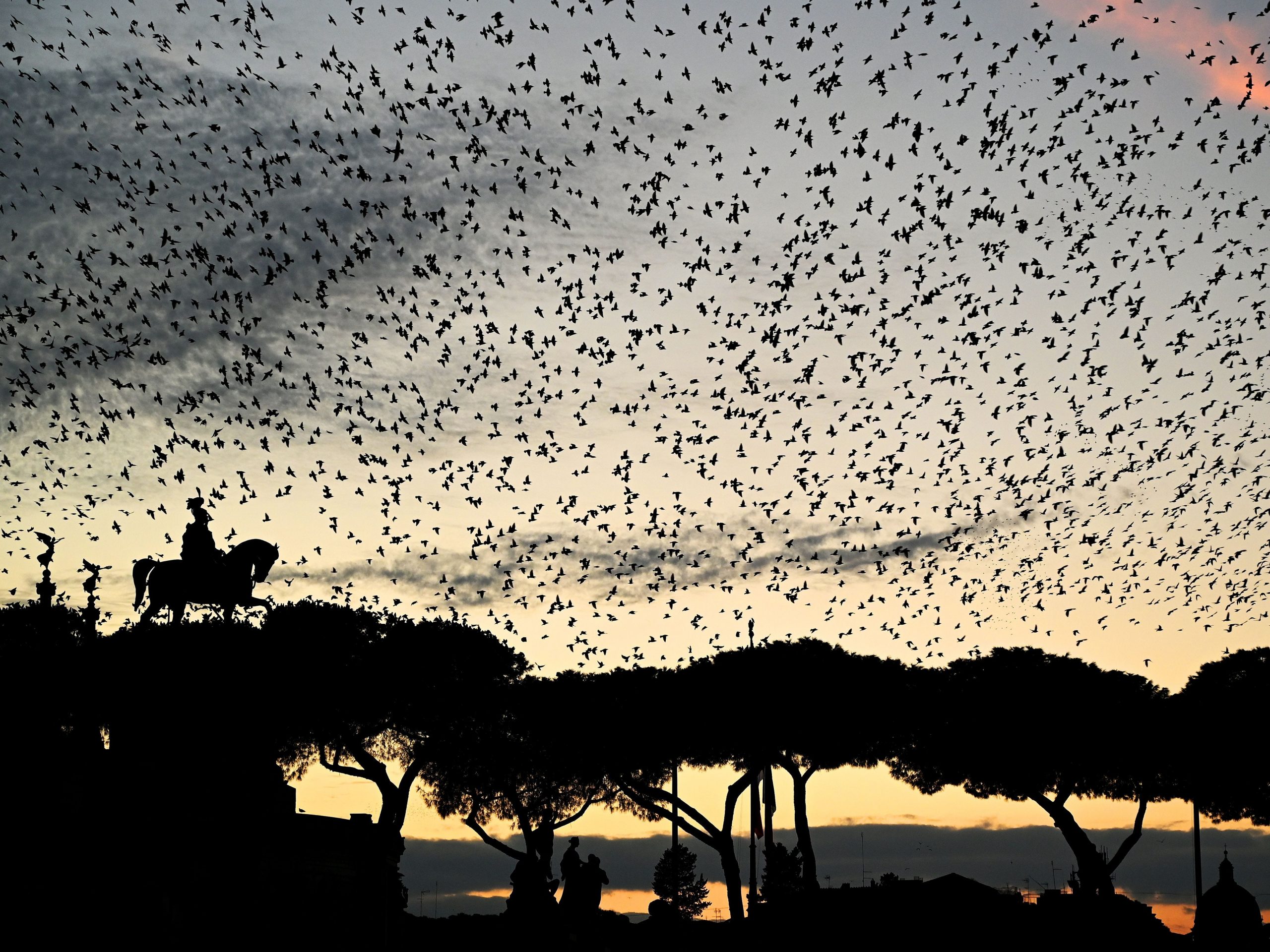
Vincenzo Pinto/AFP via Getty Images
- Hundreds of dead birds, mostly starlings, littered the streets of Rome, Italy following a New Year’s Eve fireworks display.
- The International Organisation for the Protection of Animals (OIPA) said it was likely to be the result of fireworks from a nearby leafy, green neighborhood that many birds use to roost, according to AP.
- The New Year’s Eve display was in breach of a fireworks and firecrackers ban between 31 December 2020 until midnight on 6 January 2021 imposed by the city’s mayor, Virginia Raggi.
- Visit Insider’s homepage for more stories.
Hundreds of dead birds, mostly starlings, littered the streets of Rome, Italy, following a fireworks display on New Year’s Eve.
Although the cause of the deaths is uncertain, the International Organisation for the Protection of Animals (OIPA) said it was likely to result from fireworks from a nearby leafy, green neighborhood that many birds use to roost, according to the Associated Press.
Loredana Diglio, a spokesperson from the organization, told AP: “It can be that they died from fear. They can fly up together and knock against each other or hit windows or electric power lines. Let’s not forget they can also die of heart attacks.”
OIPA also tweeted an image of the starlings’ carcasses scattered near the city’s Roma Termini train station and called for a fireworks ban.
—OIPA International (@OIPAInternation) January 1, 2021
The New Year's Eve display was in breach of a fireworks and firecrackers ban between 31 December 2020 until midnight on 6 January 2021 imposed by the city's mayor, Virginia Raggi.
Although fireworks can be confiscated and a fine of up to €500, it was largely ignored, as was the 10pm COVID-19 curfew.
The UK-based charity, Royal Society for the Protection of Birds (RSPB) says that there is "little evidence to suggest that fireworks harm wild birds or affect their conservation status."
However, OIPA adds that firework residue contains toxic chemicals and poisons harmful to animals when ingested on its website.
